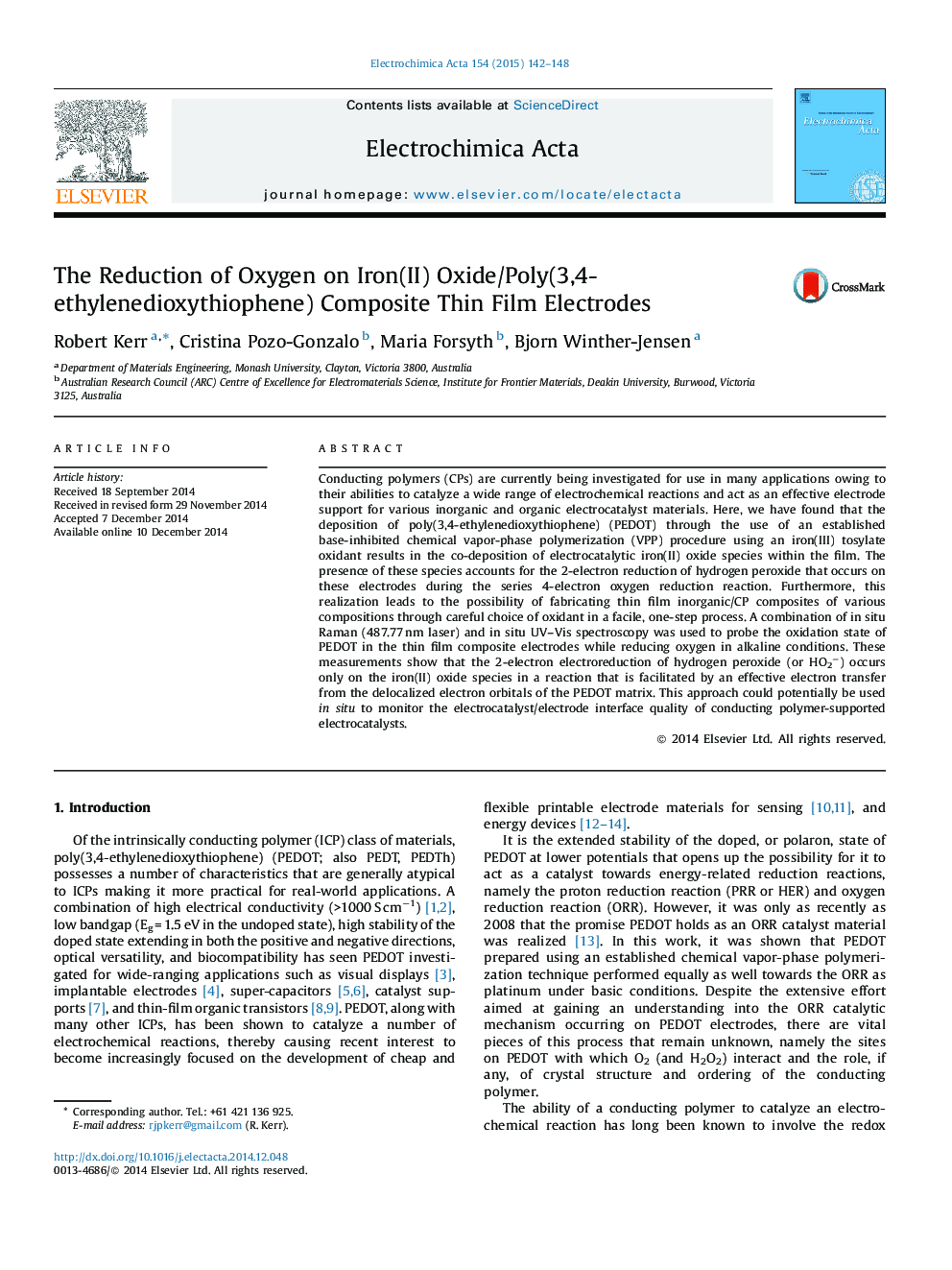| Article ID | Journal | Published Year | Pages | File Type |
|---|---|---|---|---|
| 184675 | Electrochimica Acta | 2015 | 7 Pages |
Conducting polymers (CPs) are currently being investigated for use in many applications owing to their abilities to catalyze a wide range of electrochemical reactions and act as an effective electrode support for various inorganic and organic electrocatalyst materials. Here, we have found that the deposition of poly(3,4-ethylenedioxythiophene) (PEDOT) through the use of an established base-inhibited chemical vapor-phase polymerization (VPP) procedure using an iron(III) tosylate oxidant results in the co-deposition of electrocatalytic iron(II) oxide species within the film. The presence of these species accounts for the 2-electron reduction of hydrogen peroxide that occurs on these electrodes during the series 4-electron oxygen reduction reaction. Furthermore, this realization leads to the possibility of fabricating thin film inorganic/CP composites of various compositions through careful choice of oxidant in a facile, one-step process. A combination of in situ Raman (487.77 nm laser) and in situ UV–Vis spectroscopy was used to probe the oxidation state of PEDOT in the thin film composite electrodes while reducing oxygen in alkaline conditions. These measurements show that the 2-electron electroreduction of hydrogen peroxide (or HO2−) occurs only on the iron(II) oxide species in a reaction that is facilitated by an effective electron transfer from the delocalized electron orbitals of the PEDOT matrix. This approach could potentially be used in situ to monitor the electrocatalyst/electrode interface quality of conducting polymer-supported electrocatalysts.
